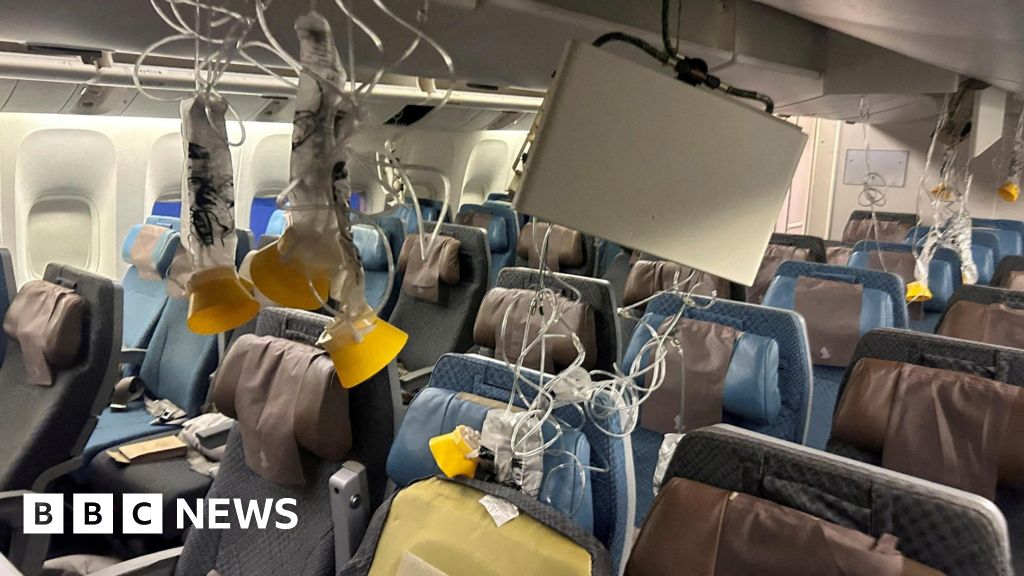People just learning what the g stands for?think it's poorly worded but they are referring to g force.
You are using an out of date browser. It may not display this or other websites correctly.
You should upgrade or use an alternative browser.
You should upgrade or use an alternative browser.
Fasten your seatbelts
- Thread starter Ayahuasca
- Start date
More options
Thread starter's postsThe prototype 707 did do a barrel roll though!IIRC the prototype 747 definitely did not do a loop the loop during a private test, and the pilot is definitely not reported to have stated "I looked at the data for the aircraft and worked out the forces involved"(I'm never sure how true that story is, as apparently it happened but not officially
)
Soldato
It might not be much for the airframe...for anyone and anything that was in it and not secured and carrying on it the previous direction with their own inertia it's a different matter(IIRC much lower forces and changes in direction of travel of the aircraft have caused aircraft to crash if sufficient mass has not been secured properly).
It might be something that is fun if you're expecting it (say on a roller coaster or an acrobatic aircraft), but if you're not then injuries happen and damage occurs.
I was strapped in when the plane I was in dropped, no idea how far, but it caused a lot of panic, but what I was referring to, is, count to 5, 54m in that amount of time when travelling at several hundred miles an hour, when at 36,000ft, 54m, its really a sharp drop all things being equal, it is literally because people weren't strapped in.
Soldato
They descended on average +0.5g (not negative g). It would feel like a very significant drop. Even for 1s that would feel uncomfortable let alone 4.6sYep

Singapore Airlines plane dropped 178ft in five seconds, black box data reveals
Rapid changes in gravitational force caused the altitude drop which injured passengers, investigators say.www.bbc.co.uk
That's definitely in rollercoaster drop territory

Last edited:
Soldato
People just learning what the g stands for?
Yes but ........ whatever.
I watch plenty of Scott Manley I'll have you know!
Man of Honour
They descended on average +0.5g (not negative g). It would feel like a very significant drop. Even for 1s that would feel uncomfortable let alone 4.6s
but who is right? - FIGHT
54m in a little under 5 seconds is nothing.
Associate
G force only deviates from 1 during acceleration, so when the rate of descent actually changes. The severity is down to how abrupt those changes are. Simply knowing the amount and duration of a descent doesn't give you enough information to know what forces were involved.
Also, regardless of how much or how fast the turbulence is, if the aircraft comes out the other side flying level again, the average G force was 1.
Also, regardless of how much or how fast the turbulence is, if the aircraft comes out the other side flying level again, the average G force was 1.
Last edited:
Soldato
G force only deviates from 1 during acceleration, so when the rate of descent actually changes. The severity is down to how abrupt those changes are. Simply knowing the amount and duration of a descent doesn't give you enough information to know what forces were involved.
Also, regardless of how much or how fast the turbulence is, if the aircraft comes out the other side flying level again, the average G force was 1.
So, what you're saying is, those that were strapped in actually had more G effect on them as they were connected to the plane for the entire 4.6 seconds, where those that weren't strapped in had half a second less G effect, but had the additional 'hitting the top of the plane' forces, right?
Associate
Not sure if I was actually saying that.
A passenger can't experience negative G unless something 'pulls' them down. - that's the effect of the seatbelt. Without it they will only 'fall' due to gravity, and if the aircraft's descent is increasing at a faster rate, they end up on the ceiling.
Think about a ball in a vertical tube. If you lower the tube slowly the ball will stay on the bottom, but if you accelerate the tube faster it can 'float'. Faster still and the top of the tube will hit the ball.
Also, if you move the tube up quickly and then suddenly downwards you can make the ball hit the top. From the BBC report above it sounds like that's what actually happened.
A passenger can't experience negative G unless something 'pulls' them down. - that's the effect of the seatbelt. Without it they will only 'fall' due to gravity, and if the aircraft's descent is increasing at a faster rate, they end up on the ceiling.
Think about a ball in a vertical tube. If you lower the tube slowly the ball will stay on the bottom, but if you accelerate the tube faster it can 'float'. Faster still and the top of the tube will hit the ball.
Also, if you move the tube up quickly and then suddenly downwards you can make the ball hit the top. From the BBC report above it sounds like that's what actually happened.

